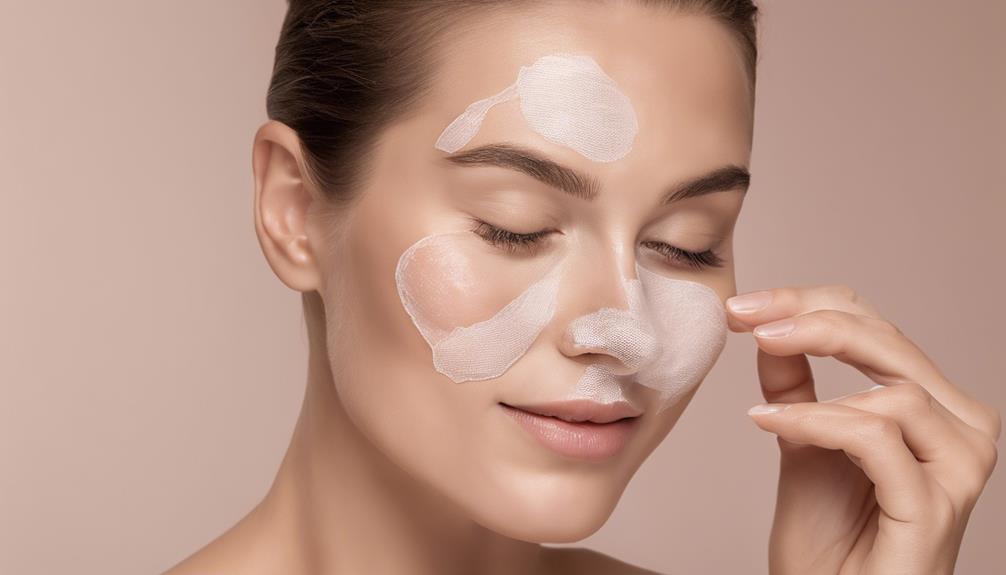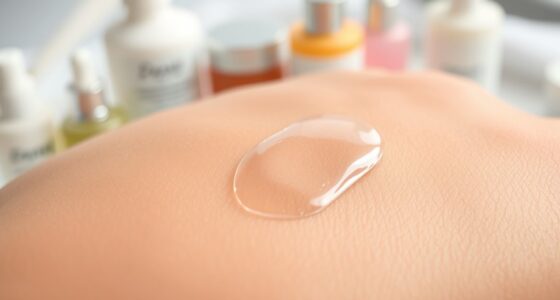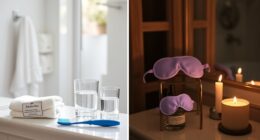When deciding between pimple patches and creams, it often comes down to your specific skin needs. Patches work wonders on superficial blemishes, especially those with visible pus, while creams can effectively target early-stage pimples and reduce inflammation. Patches offer targeted treatment and can boost your confidence by concealing blemishes, but creams provide broader coverage and consistent results. Want to know more about how they compare and the best practices for acne treatment?
Key Takeaways
- Pimple patches excel at treating superficial blemishes, especially those with visible pus, by promoting healing through hydrocolloid absorption.
- Acne creams provide broader coverage and target early-stage pimples, effectively unclogging pores and reducing inflammation.
- Patches create a protective barrier that prevents picking and irritation, boosting user confidence in visible blemishes.
- Creams often contain moisturizing agents to combat dryness, making them suitable for long-term use and significant skin improvement.
- Effectiveness varies by individual skin concerns, with patches suitable for quick fixes and creams better for comprehensive treatment.
Understanding Acne and Pimples
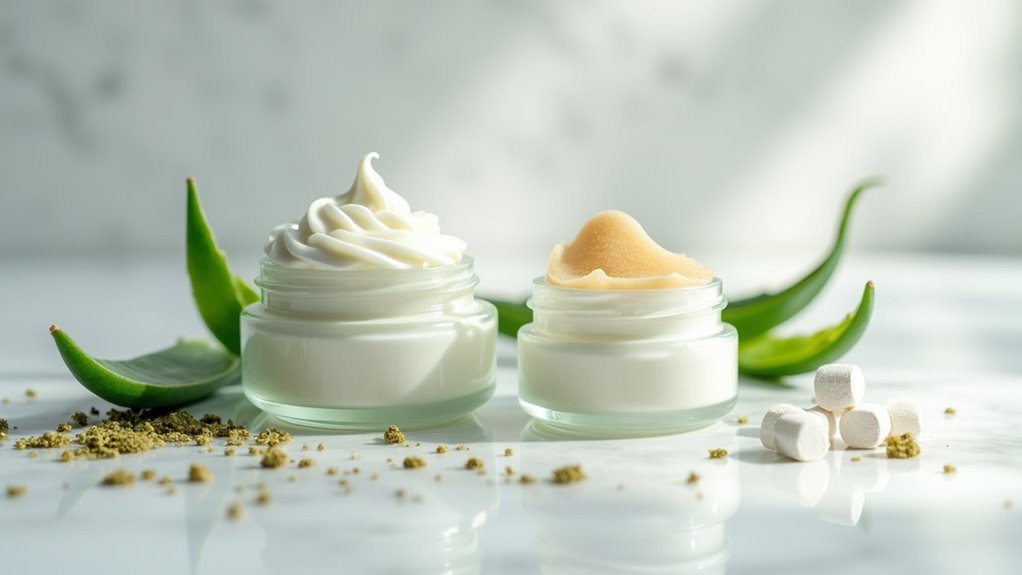
Acne is more than just a skin issue; it’s an inflammatory disorder that often manifests as pimples. These pimples form when dead skin cells and excess oil (sebum) clog your pores, leading to swelling and sometimes infection.
Hormonal changes, stress, and diet can also contribute to breakouts, so it’s crucial to understand your triggers. To effectively treat acne, you’ll need to focus on a consistent skincare routine that includes the right ingredients.
Look for products that contain hydrocolloid, which can help draw out impurities from the surrounding skin. Managing your acne isn’t just about treating existing pimples; it’s about preventing new ones from forming by maintaining a balanced approach to your skincare.
What Are Pimple Patches?
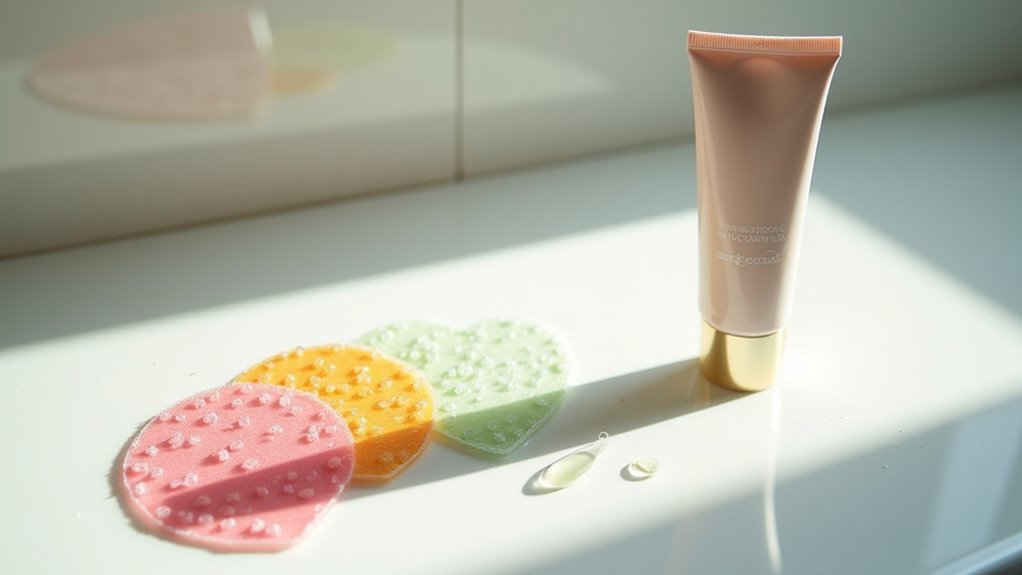
Pimple patches are innovative solutions designed to tackle blemishes effectively. These small adhesive bandages, often made from hydrocolloid material, help create a moist environment that promotes healing.
Pimple patches are small, adhesive solutions that effectively promote healing by creating a moist environment for blemishes.
Here’s what you need to know about pimple patches:
- Absorb Excess Fluid: Hydrocolloid patches draw out excess fluid from pimples, speeding up the healing process.
- Reduce Size: Many users report that these patches can considerably reduce the size and appearance of blemishes, particularly whiteheads.
- Medicated Options: Some patches contain active ingredients like salicylic acid and benzoyl peroxide, providing additional treatment while minimizing skin irritation.
With their rising popularity on social media, pimple patches offer a convenient way to manage breakouts discreetly and effectively. Additionally, they can be a game-changer for acne-prone skin routines, enhancing the effectiveness of blemish treatment.
How Pimple Patches Work
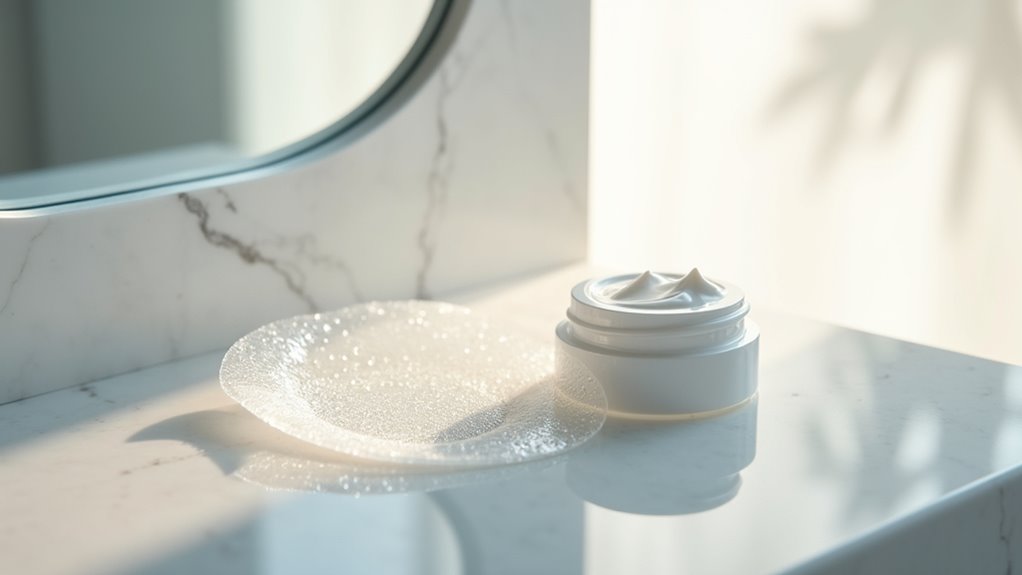
When it comes to treating blemishes, understanding how pimple patches work can enhance your skincare routine. These patches primarily use hydrocolloid, a gel-forming material that absorbs excess fluid and creates a moist environment. When you apply an acne patch to a pimple, it draws out pus and oil, helping to reduce inflammation and promote healing. Many patches are also infused with salicylic acid, which unclogs pores and further aids in blemish reduction. They serve as a protective skin’s barrier, keeping external irritants and bacteria at bay, while controlling the urge to pick at your pimples.
| Function | Key Ingredient | Benefit |
|---|---|---|
| Absorbs excess fluid | Hydrocolloid | Reduces size of blemishes |
| Unclogs pores | Salicylic Acid | Promotes healing |
| Protects from irritants | Tea Tree Oil | Reduces inflammation |
Creams: The Alternative Approach

While pimple patches offer targeted relief, creams present a broader approach to managing acne. Acne creams often contain active ingredients like salicylic acid and benzoyl peroxide, which work to unclog pores, kill bacteria, and reduce inflammation.
Pimple patches provide targeted relief, while creams offer a comprehensive solution for acne management.
Here are three key benefits of using creams:
- Broader coverage: Unlike patches, creams can be applied to larger areas, preventing potential breakouts.
- Moisturizing agents: Many creams include moisturizing agents to maintain skin hydration, counteracting dryness caused by active ingredients.
- Consistent use: While they may take longer to show results, consistent use over days or weeks can lead to significant improvement in your skin condition. Additionally, creams can be effective for various skin types, including sensitive skin, making them a versatile option for acne treatment.
Choosing the right treatment depends on your skin type and acne severity.
Comparing Effectiveness: Patches vs. Creams

Choosing between patches and creams for acne treatment often boils down to the specific type of blemish you’re dealing with, as each method excels in different areas.
Patches work best for superficial blemishes and mature pimples with visible pus, thanks to hydrocolloid patches that absorb excess fluid and promote healing.
On the other hand, creams utilize active ingredients like salicylic acid to target early-stage pimples and reduce inflammation.
While patches offer a targeted treatment, creams provide a broader array of ingredients tailored to various skin types.
User experiences suggest that patches can boost confidence by making blemishes less visible, but creams may require consistent application for noticeable improvements.
Ultimately, effectiveness varies based on your unique skin concerns.
Best Practices for Acne Treatment
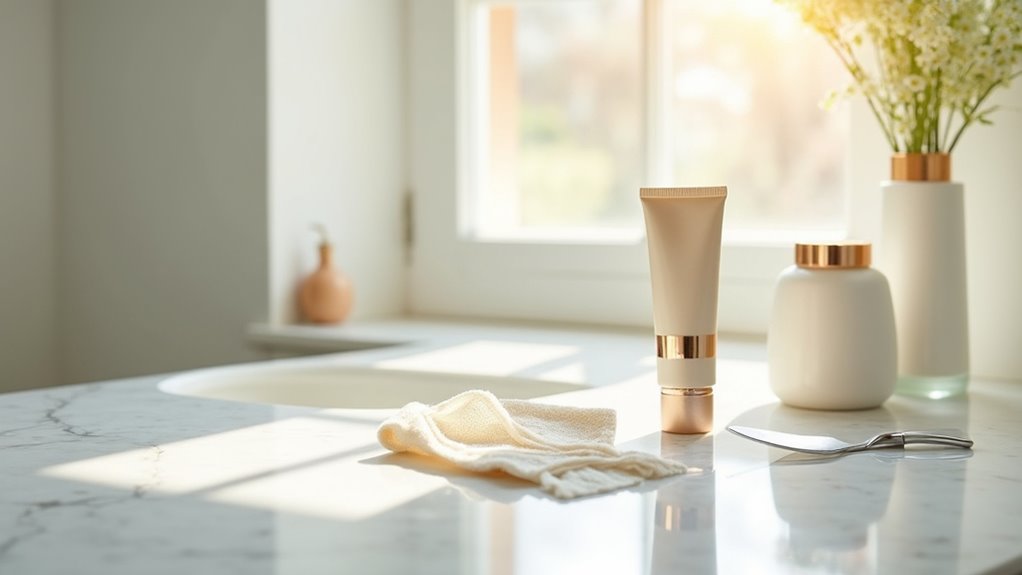
When it comes to acne treatment, knowing how to apply pimple patches effectively can make a big difference in their performance.
You’ll want to guarantee your skin is clean and dry before sticking them on, especially for those stubborn whiteheads.
On the other hand, creams might be your go-to for early-stage pimples, as they help prevent breakouts from worsening.
Patch Application Techniques
To achieve the best results with pimple patches, start by ensuring your skin is clean and completely dry. This enhances adhesion and effectiveness.
Here are some best practices for applying patches:
- Apply the patch directly over the blemish: This helps the patch absorb excess fluid and promote healing effectively.
- Avoid oil-based products beforehand: They can hinder adhesion, making your acne patches less effective.
- Monitor skin reactions: If you have sensitive skin, watch for any redness or discomfort from the hydrocolloid material. If irritation occurs, discontinue use and consult a dermatologist.
Creams vs. Patches
Understanding the differences between pimple patches and creams can help you make informed choices for your acne treatment.
Pimple patches leverage hydrocolloid technology to absorb fluid and promote healing, making them ideal for isolated spots. They also provide a protective barrier, reducing the temptation to touch or pick at blemishes.
On the other hand, creams typically contain active ingredients like salicylic acid or benzoyl peroxide, targeting acne over larger areas. While patches can show visible results in hours, creams require consistent use for weeks to yield improvements.
For thorough acne management, consider combining both methods: use patches for spot treatments and creams for broader coverage, ensuring you maximize the effectiveness of your skincare routine.
Frequently Asked Questions
Is It Better to Pop a Pimple or Use a Patch?
When you’re faced with a pimple, it’s tempting to pop it, but that can lead to more problems.
Instead, consider using a pimple patch. It absorbs fluid and creates a moist environment, promoting faster healing while protecting your skin from irritation.
Popping can introduce bacteria and worsen inflammation, so resist the urge.
Are Acne Patches Effective?
Acne patches can be effective for treating superficial pimples. They absorb excess fluid and create a moist environment that promotes healing.
If you’re dealing with early-stage breakouts, patches with active ingredients like salicylic acid can target bacteria and reduce inflammation. However, their effectiveness varies based on your skin type and the acne’s severity.
While many users report positive results, consulting a dermatologist can help you find the best option for your specific needs.
Is Benzoyl Peroxide Better Than Pimple Patches?
When comparing benzoyl peroxide and pimple patches, it really depends on your acne type.
If you’re dealing with inflamed breakouts, benzoyl peroxide’s antibacterial properties can help reduce both severity and duration quite effectively.
However, if you’ve got surface-level blemishes, pimple patches can work wonders by absorbing excess fluid.
Just remember, benzoyl peroxide might cause dryness, so proper skincare is key, while patches are gentler on sensitive skin.
Choose wisely!
Do Pimple Patches Make Pimples More Red?
Imagine peeling off a pimple patch, only to find your skin flaring up in bright red hues.
You might notice this temporary redness after removal, especially if your skin’s sensitive or inflamed. Sometimes, the active ingredients can irritate, adding to that redness.
Keep an eye on your skin’s reaction—if irritation worsens, it’s best to stop using them.
Over time, they’re designed to reduce inflammation, leading to calmer skin.
Conclusion
In the battle against acne, whether you choose patches or creams depends on your skin’s unique needs. Both have their merits, but remember, “an ounce of prevention is worth a pound of cure.” Pimple patches can provide targeted relief while creams offer broader treatment options. Ultimately, you should assess what works best for you, and stick to a consistent skincare routine. With the right approach, you can keep those pesky pimples at bay and enjoy clearer skin.
Claire has a knack for turning complex dermatological concepts into engaging, easy-to-understand articles. Her work primarily focuses on creating detailed reviews and thought-provoking articles in the “Vetted” category. Claire’s writing not only informs but also inspires our community to try new skincare solutions.





